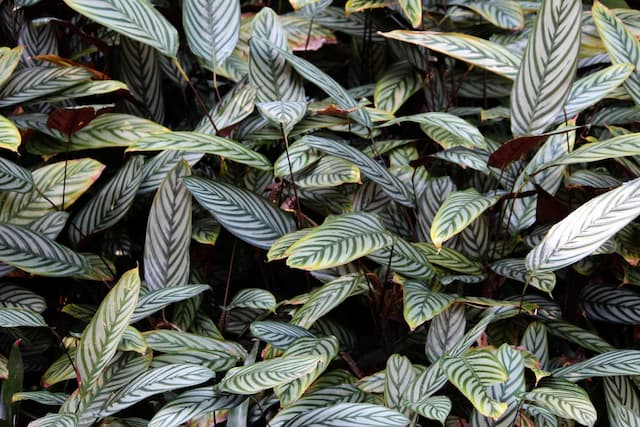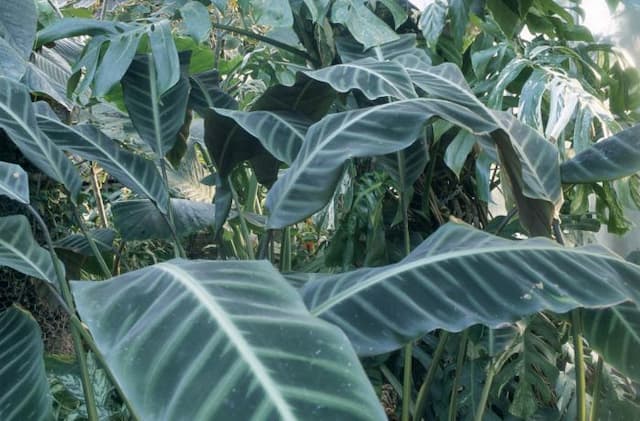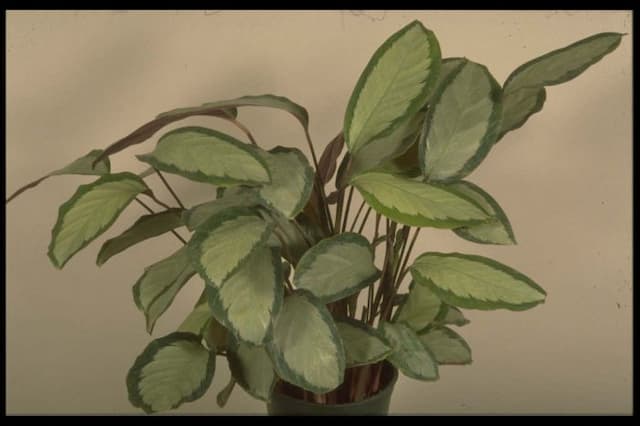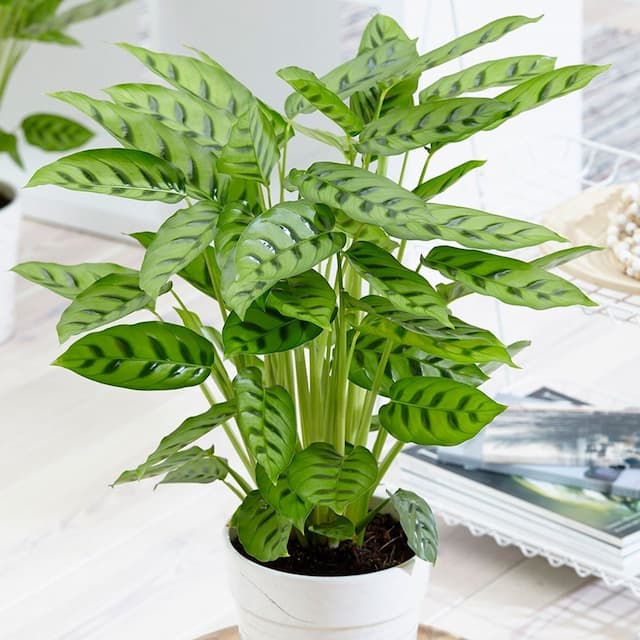Pin-stripe calathea Goeppertia ornata



ABOUT
Calathea ornata is one of the most amazing and ornamental plant species.
It is a low-growing evergreen plant, up to 30 inches tall. The leaves are elliptical, up to 8 inches long and 5 inches wide.
The outer side of the leaf is dark-green and decorated with distinct lines of white, beige, silver, or red (and shades thereof), departing perpendicularly almost from the central vein.
The inside is usually purple or light burgundy.
In nature, it blooms and flowers are white or purple and are gathered in spike-like inflorescences. The plant does not bloom indoors.
About this plant
 Names
NamesFamily
Marantaceae
Synonyms
Calathea, Calathea ornata, Striped calathea, Pinstripe, Pin-stripe, Pin-stripe calathea, Pink-stripe calathea, Peacock Plant, Zebra Plant, Cathedral Plant
Common names
Calathea arrecta, Calathea ornata, Maranta albolineata, Maranta coriifolia, Maranta ornata, Maranta regalis, Maranta roseolineata, Phrynium ornatum, Phyllodes arrecta, Phyllodes ornata
 Toxicity
ToxicityTo humans
Safe, but avoid ingesting them and keep them away from pets. May cause personal intolerance if ingested.
To pets
Safe, but avoid ingesting them and keep them away from pets. May cause personal intolerance if ingested.
 Characteristics
CharacteristicsLife cycle
Perennials
Foliage type
Evergreen
Color of leaves
Dark-green with white, beige, silver, or red stripes
Flower color
White, purple or orange
Height
2 feet
Spread
1 feet
Plant type
Herb
Hardiness zones
11
Native area
South America
Benefits
 General Benefits
General BenefitsVery decorative;
Not poisonous to humans or animals;
Since the plant needs high humidity, you should increase the level of humidity in the room, which is beneficial to the health of you and your family.
Interesting Facts
 Feng Shui
Feng ShuiAccording to Eastern teachings, the calatea takes its energy from the Sun and Mars and then transmits its fiery energy and heat to humans. With this ability, it can warm a person, protect against colds and hypothermia and improve the health of its owner.
A sunny location of the plant is best. Zodiac Sign Compitability
Zodiac Sign CompitabilityAQUARIUS
Calathea strengthens the strength and character of the person, so it is necessary for many signs. This plant especially favors Aquarius. Plant Symbolism
Plant SymbolismCalathea is a symbol of happiness. In the house, it removes tension and aggression in the relationship of household members, it brings peace and understanding, so it is desirable to have such a flower indoors.
Calathea in the children's room allows the child to fall asleep calmly and sleep at night. It calms down which allows normal mental development, to be healthy and active.
 Water
WaterIt is important to have the "golden mean": both excessive and insufficient watering are equally destructive.
Therefore, water Calathea in summer, keeping the soil moist all the time (once every 3-4 days), and in winter make sure that the top layer of substrate has already dried for 1 inch (once every 7-8 days). Light
LightCalathea likes penumbra and diffused light. For better growth and development, the plant should be protected from direct sunlight to avoid leaf burn and protected from lack of light, otherwise it will grow poorly. Therefore, shade the plant in summer and provide additional light in winter until about 10 p.m.
 Temperature
TemperatureA very heat-loving plant. Prefers a constant temperature between 65 - 75 °F all year round.
Can tolerate temperatures of 60 °F, but temperatures lower than that can harm the plant. Pruning
PruningThe plant does not need routine pruning. Only diseased or old leaves are removed as needed.
 Cleaning
CleaningOnce a month
 Soil
SoilCalatheas require a rich peat soil to grow in order to retain moisture. However, they also need excellent drainage.
A soil labeled "For Maranta" will do. Repotting
RepottingWhile the plant is young, annual transplanting is necessary.
Once the plant reaches the age of 5 years, transplanting is done once every 2-3 years, since the plant grows very slowly. Humidity & Misting
Humidity & MistingThe plant is tropical, so it needs not only high temperature but also high humidity.
In order to create ideal conditions, keep the humidity level next to Calatea between 40% and 60%.
A humidifier, moss or a tray of wet pebbles can be used to increase the humidity.
Also, the plant can be sprayed twice a day. Suitable locations
Suitable locationsIndoor
All year round
Outdoor
If you live outside of Calathea's natural habitat, it is not recommended that the plant be outside.
Hardiness zone
12 - 13 USDA
 Life cycle
Life cycleOutside its natural habitat, it does not bloom.
It is a very fastidious plant. It is very difficult to propagate and keep in good condition. If the conditions are not right, it gets sick very easily and may even die. Propogation
PropogationPropogation time
Late spring
Calathea is quite difficult to propagate indoor.
The easiest and most likely propagation is only by cuttings. Propagation by cuttings will cause less damage to the mother plant. This is done in late spring.
Root a small, healthy and hardy leaf in moist soil. Cover it with a plastic cup or glass to create a greenhouse effect.
Don't forget to ventilate from time to time.
 Pests
PestsSpider mite, Whitefly, Scale insects
 Diseases
DiseasesRoot Rot









